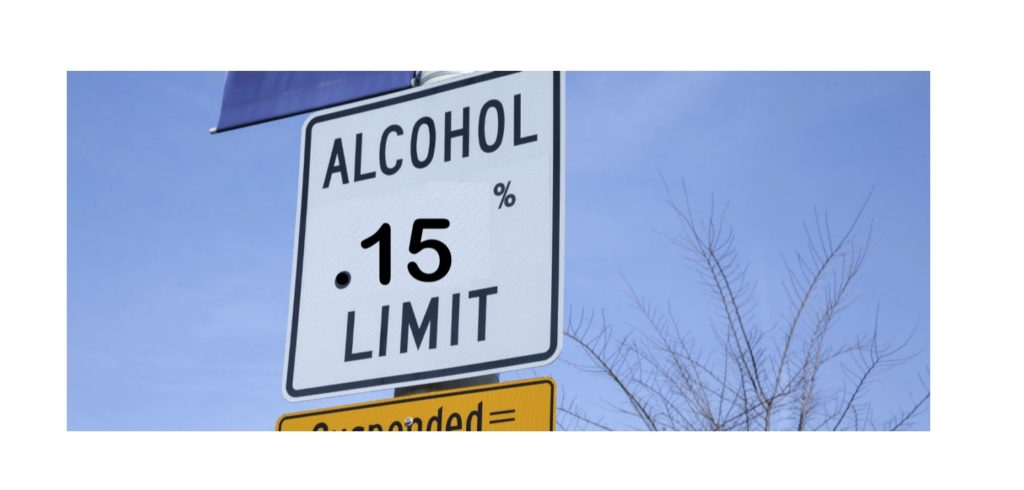A First Driving While Intoxicated charge is ordinarily a Class B misdemeanor with a period of confinement of up to 180 days. A person commits a DWI if she is intoxicated while operating a motor vehicle in a public place. Courts have interpreted the term “while operating” in context to mean intoxicated at the time of driving. However, if a person has an alcohol concentration of 0.15 or more at the time the analysis was performed, the offense is a Class A misdemeanor. As pointed out in Ramjattansingh v. State, 548 S.W.3d 540, 545 (Tex. Crim. App. 2018), the elements of a class A DWI require that: (1) the defendant was operating a motor vehicle in a public place while intoxicated at the time of driving and (2) that the defendant had a blood alcohol concentration of at least .15 or more at the time the test was performed. Therefore it is not sufficient to merely prove that a driver took a blood test with a BAC over 0.15, the state must also prove the driver was intoxicated at the time of the stop.

The prosecutors may attempt to prove intoxication at the time of the stop through retrograde extrapolation, i.e., estimating a driver’s BAC at time of the alleged offense. That can be difficult however depending on assumptions and unknown factors including an expert’s ability to explain the science with clarity, timing, and number of tests performed, and an expert’s knowledge of a driver’s personal characteristics. The expert might not be sufficiently reliable unless the expert can include the driver’s weight and gender, the driver’s typical drinking pattern and alcohol tolerance, how much the driver had to drink on the day or night in question, what the driver drank, the duration of the drinking spree, the time of the last drink, and how much and what the driver had to eat either before, during, or after the drinking. See Mata v. State, 46 S.W.3d 902, 916 (Tex. Crim. App. 2001).
Alternatively, the prosecutors could prove intoxication at the time of driving using the subjective standard showing that the driver did not having the normal use of her mental or physical faculties by reason of the introduction of alcohol into the body. That would require evidence that shows obvious signs of impairment at the time of the stop along with bad driving. A jury is free to believe or disbelieve that the driver was intoxicated at the time of driving even if the jury believes that the driver had reached 0.15 or more at the time the analysis was performed.
One fact pattern illustrates this scenario. A person drinks a large amount of alcohol before driving. A few moments later, the police stop the driver for a defective tail light. The officer detects a strong odor of an alcoholic beverage. Field Sobriety Testing ensues, and the driver is arrested for DWI. Take a moment and think, how much alcohol has absorbed into the body at the time of driving? Depending on the timing and stomach content, the answer could be very little and certainly below a 0.08. It is entirely possible that the driver is not experiencing any impairment from the effects of the alcohol at that point. Now, assume the driver is blood tested one hour after being stopped. The alcohol will have now fully absorbed into his blood and his BAC at the time of the blood test will be higher than his BAC at the time of driving. If he vigorously consumed enough alcohol before driving, he may not have been intoxicated at the time of the stop, but his BAC could have reached 0.15 or more at the time the analysis was performed. The same analysis applies if the driver starts drinking after the time of driving but before the police encounter.
One way to approach this issue with the jury is to ask for the following proposed jury charge prior to voir dire:
Defendant stands charged by Complaint and Information in Cause Number XXX with the misdemeanor offense of Driving while Intoxicated with a Blood Alcohol level of 0.15 or more, a class A misdemeanor. The State of Texas has alleged in its Information that the Defendant, on or about the _____ day of _________, 20___, did then and there operate a motor vehicle in a public place in XXX County, Texas while intoxicated, and further, the Defendant, on or about the _____ day of _________, 20___, did then and there operate a motor vehicle in a public place in XXX County, Texas while intoxicated, and had a blood alcohol concentration of 0.15 or more at the time the analysis was performed…
The Defendant requests that the Court’s Charge include the following language:
A person commits an offense if the person is intoxicated while operating a motor vehicle in a public place and that an analysis of the person’s blood shows an alcohol concentration level of 0.15 or more at the time the analysis was performed.
Now, if you believe from the evidence beyond a reasonable doubt that the Defendant on or about the _____ day of _________, 20___, in XXX County, Texas,
Operated a motor vehicle in a public place while at the time of driving —
Not having the normal use of his mental or physical faculties by reason of the introduction of alcohol into the body, or
Having an alcohol concentration of 0.08 or more, and
You further believe from the evidence beyond a reasonable doubt that an analysis of the Defendant’s blood showed an alcohol concentration level of 0.15 or more at the time the analysis was performed,
Then you will find the Defendant guilty, but if you do not so find, then you shall acquit the defendant and find him not guilty.
During voir dire, it will be important to illustrate this issue for the jury and ask if they can follow the court’s instruction.
David Frank also handles all criminal defense related matters in Texas and Federal court.



Leave a Reply